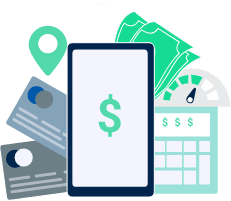The Psychology of Impulse Spending Explains Why It Happens & How To Stop It
About Ashley
Ashley Jones is a freelance writer based in Houston, Texas and can be reached at ashleyaustin89@gmail.com. Her work has appeared across multiple platforms including Romper, Cancer Today, Publisher’s Weekly, Elite Daily, Mommy Poppins, Cancer Wellness Magazine, Motherfigure, Ladders News, and Let Grow.
Read full bio
At a Glance
We live in a society driven by consumption. Everywhere you look, there’s something to buy. The pull to spend your hard-earned dollars on something that catches your eye can be tempting, but impulse spending can also have big consequences for your wallet.
Even during record-high inflation, 73% of adults admitted in a 2022 survey by Slickdeals that the majority of their purchases are spontaneous. These unplanned purchases can really add up. The same survey found that the average person spends $314 each month on impulse purchases. Just imagine what a dent that amount could make if you applied it to your credit card debt instead.
So, what motivates the urge to snag something you never planned to buy in the first place? Let’s take a closer look at the psychology of impulse spending to understand why it happens and how to reign in to avoid financial regret.
What is impulse spending?
Simply put, impulse spending is buying something you didn’t plan to buy. Big or small, an unplanned purchase means money spent. Impulse buys are usually sudden decisions made without prior thought or intention. When impulse spending gets out of control or the purchase is too far out of your budget, it can lead to financial regret.
Though psychologist Ian Zimmerman, Ph.D. explains that all consumers will exhibit impulsive spending behaviors now and then, there are some people who reach a tipping point that can lead to unhappiness and debt. “If you find that you often spend money without really thinking about what you’re buying or why, and you fit the description of an impulse buyer, you may have an impulse buying tendency,” Zimmerman writes in an article for Psychology Today.
Need to get your spending under control? Learn how MyCredello can help you analyze your habits to make the best financial decisions for you.

Start your payoff plan right now
Build your payoff plan with MyCredello and you’ll be able to clear your debt sooner than you thought
Build your payoff plan with MyCredello and you’ll be able to clear your debt sooner than you thought
Why does impulse spending happen?
There are a number of driving forces behind the urge to make an impulse buy — every person is different, after all — but experts agree that emotions play a huge role in why impulse spending occurs.
Marsha Barnes, a Certified Financial Social Worker and founder of The Finance Bar says that in her personal experience with consumer spending habits points to emotions as one of the main driving forces behind the urge to make impulse purchases. “We often spend when we’re happy, to celebrate a recent win or to reward ourselves, but we also spend when we’re sad to get a boost of dopamine to help us feel better in the moment,” Barnes says, naming this common type of emotional spending, “retail therapy.”
Consumer-saving and family finance expert, Andrea Woroch, adds that impulse purchases are often based on momentary feelings — both good and bad — but they can have a lasting impact. “While you may get a temporary high from the new purchase, it will quickly fade and could make you feel worse in the event you experience buyer’s remorse or go into debt for that item,” she says.
Buyers remorse can also happen when you’re shopping for others. One characteristic many impulse shoppers may share is a need to impress other people, according to Zimmerman’s analysis. This can include shopping for gifts for others as well as trying to show off your own social status with the latest and greatest tech, clothing, or home goods.
Want to avoid impulse spending? Make a plan for your money
“Another driver of impulse spending is many consumers don’t have a plan for their money, which leads to spending freely as opposed to spending in designated areas stemming from both your long term and short term goals,” Barnes explains. The more time you spend thinking about a purchase, the better the odds are that you’ll make a decision that you won’t regret in the future. Making a plan for your money so that you avoid impulse purchases will also help set you up for future success with regard to long-term financial goals.
“One of the greatest ways to control impulse spending is to take time to identify what you truly value in life. Oftentimes, we spend money on items and experiences we like, but not those we really love,” Barnes says. “Ask yourself the following questions: What lights you up and brings you joy? Is it time with family and friends? Is it exploring different cuisines and restaurants? Once you have this answer in mind, move towards keeping track of your finances to see how well you’re progressing when it comes to value-based spending.”
Keep track of your credit usage during times of increased spending — like the holiday season or when you’re planning for a large purchase like a car or a home — to stay on top of your spending. For this, Barnes recommends a credit card portal like the Wells Fargo’s Credit Close-up℠ tool to track your progress.
Beware of boredom-driven impulse buys
The lack of a shopping plan can also encourage impulse spending when you’re “bored and browsing,” according to Woroch. “The act of browsing when you’re bored puts you into a prime situation to buy something you don’t need,” she explains.
70% of shoppers in the aforementioned Slickdeals survey said that they are most likely to make impulse purchases on their phone while in bed, which aligns with Woroch’s experience. Instead, Woroch recommends shoppers find something else to fill their time when they’re bored like going for a walk, reading, or connecting with others.
“The less time you have to think through a potential purchase, the more likely you are to act on impulse and spend, Woroch explains. “The ease of buying online or on your mobile device causes many people to buy on impulse thanks to one-touch buying and saved payment/shipping details. Making it harder to complete a purchase is one quick way to banish impulse spending.” She suggests deleting the payment info autosaved into shopping accounts or getting rid of retail apps that you find yourself especially prone to making impulse buys with.
Stay aware of sneaky ways impulse buys can infiltrate your shopping experience
While there’s something to be said for saving money when buying something that’s on sale, deals and savings potential are another big driver of impulse spending. “The never ending deal cycle creates a buying frenzy and creates a sense of urgency that leads to impulse buys,” says Woroch. “If you can’t resist a sale, unsubscribe from retail newsletters that send tempting sales and turn off push notifications in retail and deal apps.” You can also plan for and around sales to help avoid the urge to impulse spend.
Impulse buys can also pop up under the guise of free shipping. For example, if you find a gift for $40 online, but the retailer only offers free shipping on orders totaling $50 or more, you may be tempted to impulse spend $10 more just to get the $5 standard shipping charge waived. In reality, you just spent an extra $5 that you didn’t have to.
“Give yourself a rule like 24 hours to sleep on it and give yourself plenty of time to think it through,” Woroch suggests. “If you’re pondering a limited time deal, just give yourself some time.”
The bottom line
If you want to get impulse spending under control, you have to know what’s driving it. Are your purchases emotional? Are you tempted by big sales and deals? Above all, know where your finances stand before you spend. How much can you realistically afford to spend? Make a plan for purchases large and small, and stay aware of your overall financial wellness as you spend.









